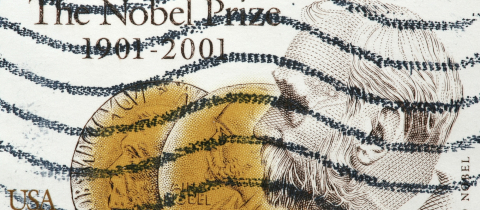Take some corn syrup, water, flour, red food dye and blue food dye. Blend these ingredients together in the right ratio and you’ll have a great batch of fake blood! It won’t be of any good for transfusions, but when it comes to movies, it makes for a very effective substitute for the real thing. By no means is this the only recipe that is used. Over the years special effects experts have developed numerous variants but the most common base is some sort of syrup composed of a combination of simple carbohydrates. The addition of water and flour provides the right consistency and a blend of food dyes gives the right colour. Red food dye by itself is too bright, but add a small amount of blue and you’ve got just the right colour for blood. Some special effects experts prefer a mix of red dye and cocoa powder.
In black and white films, the exact shade of fake blood is less important and Alfred Hitchcock used straight Bosco Chocolate syrup in the classic shower scene. First introduced in 1928, Bosco syrup is still around, made of corn syrup and cocoa with sugar and malt extract added for taste and xanthan gum as a thickener. The syrup garnered publicity in 1997 when Bazilian artist Vik Muniz used it to paint a replica of Leonardo DaVinci's famous “Last Supper.” Although this was a first for chocolate syrup, other artists have used various substances to produce their own versions of the painting. These have included rock salt, stamps, toast, spider webs, Rubik’s cubes and vegetables. Human ingenuity seems to have no boundaries.
The composition of Bosco syrup today is not the same as when Hitchcock used it for Psycho in 1960. The main difference is that high fructose corn syrup is now one of the ingredients because it allows for the same degree of sweetness in spite of using less sugar, a more expensive ingredient. Corn syrup and high fructose corn syrup are not identical products. Corn starch is a white powder, chemically composed of polymers of glucose, meaning that it consists of hundreds of glucose molecules joined together either in a straight chain known as amylose or in a branched-chain version called amylopectin. If the starch is treated with dilute hydrochloric acid, the chains break down to yield a mix of individual glucose molecules along with maltose, which is two glucose units joined together, and various short glucose chains known as oligosaccharides. Today, instead of using an acid, a mixture of corn starch and water is treated first with alpha amylase, a bacterial enzyme that breaks the starch down into oligosaccharides, followed by the addition of gamma-amylase, an enzyme isolated from the Aspergillus fungus that converts some of the oligosaccharides to glucose.
In the case of high fructose corn syrup, another bacterial enzyme, D-xylose isomerase, is used to convert some of the glucose into fructose. Fructose is sweeter than glucose so that an equivalent amount of high fructose corn syrup is sweeter than regular corn syrup. The technology for producing high fructose corn syrup became popular in the 1970s because it made for a cheaper way to add sweetness to foods and beverages than using sugar, mostly because of the large subsidies given to corn growers in the U.S. Also since high fructose corn syrup is a liquid, it is easier to transport and blend, particularly when it comes to formulating beverages. The popularity of high fructose corn syrup is fading as an increased intake of fructose is being linked by some researchers to obesity and even heart disease. When it comes to making fake blood, it doesn’t matter whether it is regular corn syrup or high fructose corn syrup or “golden syrup,” a sugary concoction popular in the United Kingdom. Golden syrup is made by treating a sugar solution either with an acid or the enzyme invertase. In either case, sucrose, the chemical term for table sugar, is broken down into its components of glucose and fructose. The high fructose content provides for a sweeter taste, and as an added benefit, when it comes to baking, golden syrup is less likely to crystallize than a syrup made from sucrose.
While corn syrup is made of corn starch, clearly the two substances are different. In more ways than you may think. You can’t walk on corn syrup, but you can walk on a liquidy mix of water and corn starch. Well, maybe not walk, but you can run. That’s because a mixture of water and corn starch makes for a non-Newtonian fluid. Isaac Newton did more than watch apples fall. He was even interested in the viscosity of liquids and determined that the viscosity can be changed by altering the temperature. Try warming up some honey in the microwave and see how easy it then flows. Non-Newtonian fluids can change their viscosity not only in response to temperature change but also in response to pressure. When pressure is applied to a viscous water-starch mixture, it momentarily becomes a solid, but quickly reverts to a liquid. That’s why you can run across a basin filled with water and corn starch. Your weight provides enough pressure to solidify the corn starch. But you can’t dilly-dally. You have to take the next step before the mix reverts to a liquidy state. If making a pool of corn starch is too big a challenge, which it probably is, you can impress your friends by making a small batch in a bowl. Add some food dye and it looks like blood. Then slap it hard with your hand. Everyone will expect the guck to fly all over the place, but if done right, the fluid’s non-Newtonian nature guarantees that nothing happens. But if your slap is too timid, you’ll end up with a bloody mess.







